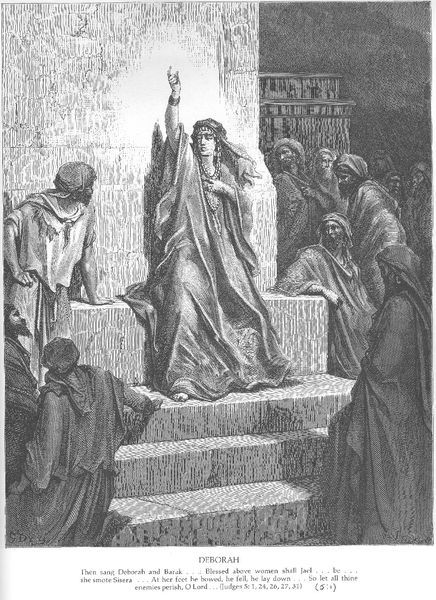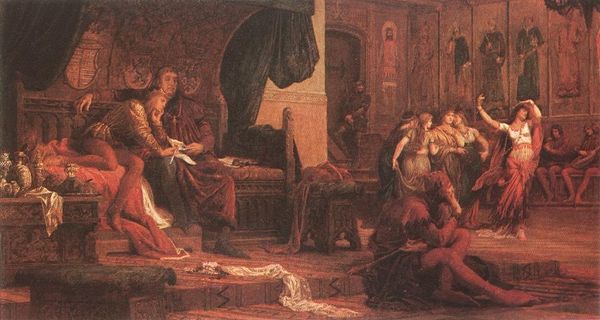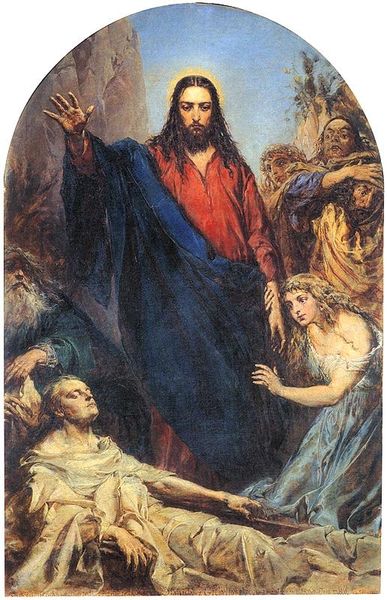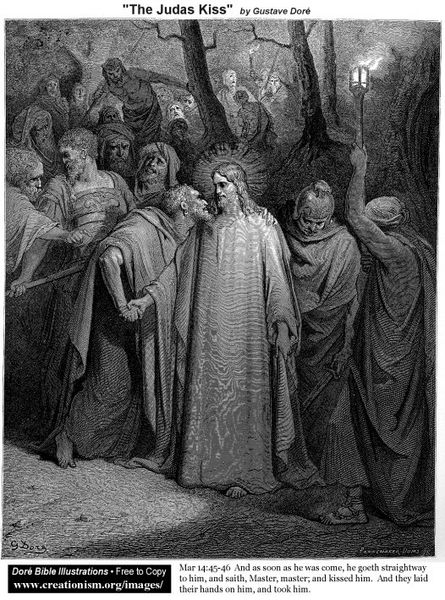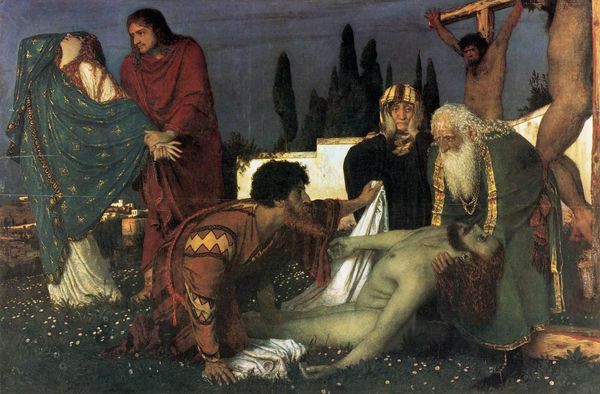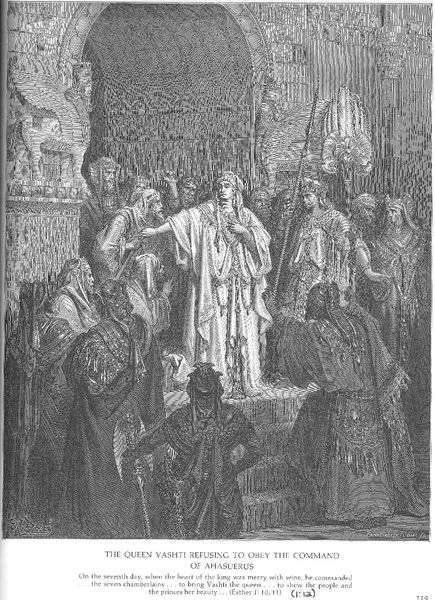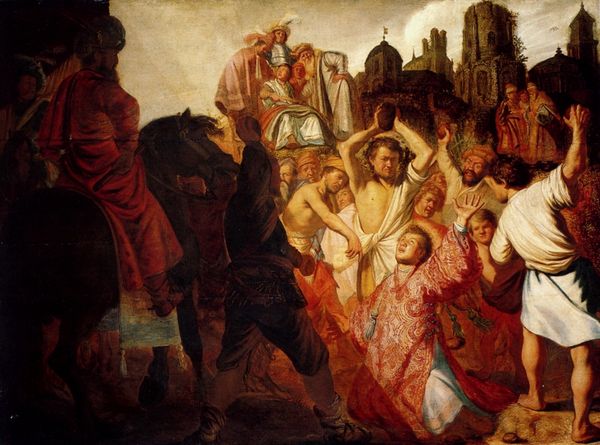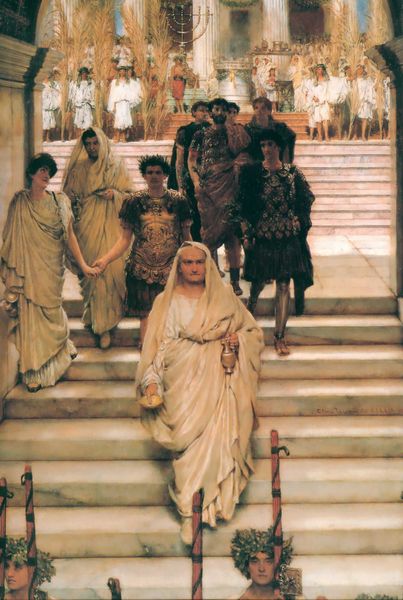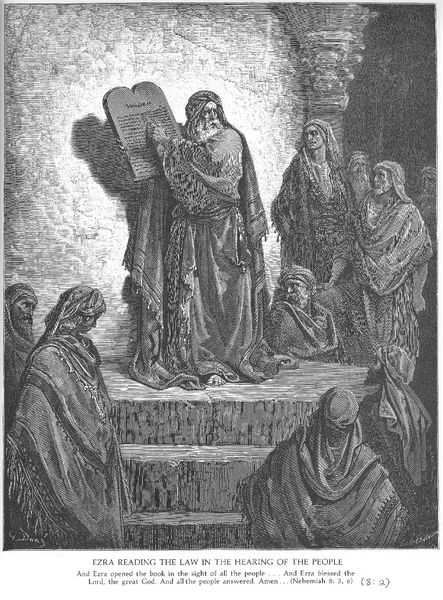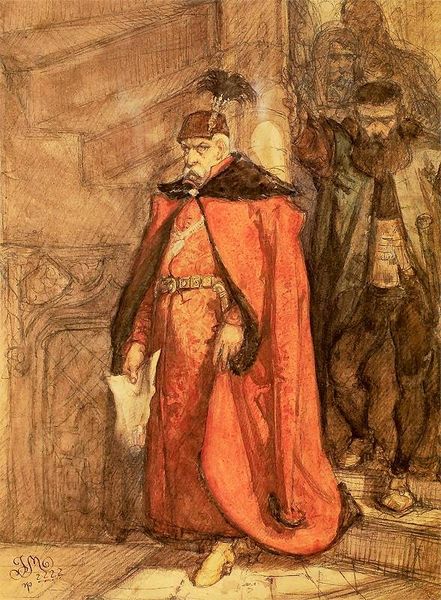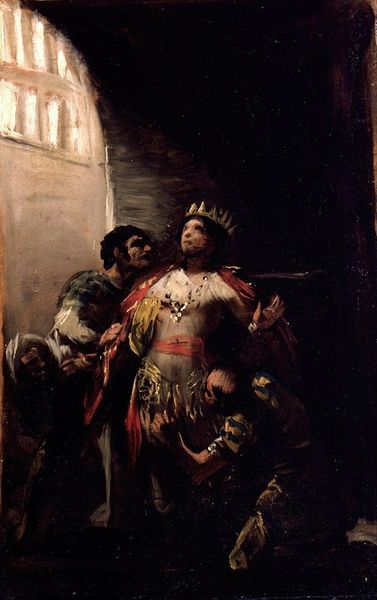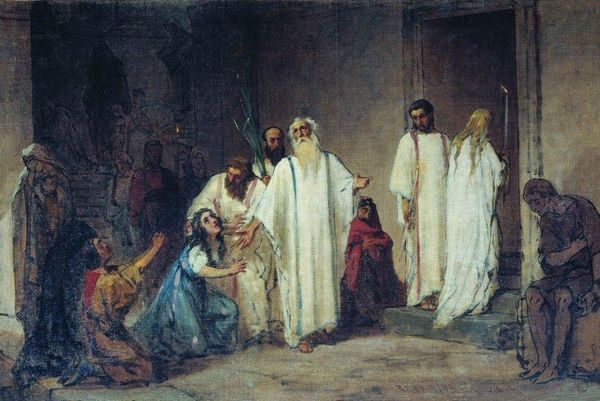
Dimensions: 354 x 585 cm
Copyright: Public domain
Curator: Gustave Doré's oil painting "Ecce Homo," completed in 1877, portrays a pivotal scene from the Passion. What strikes you most about it? Editor: It's intensely theatrical. The dramatic lighting, the figures thronging around Jesus… it speaks to the performative aspects of power and judgment, especially during times when religious and political structures intertwine. It's meant to indict the whole crowd, the 'mob' demanding crucifixion. Curator: Indeed. The phrase "Ecce Homo," meaning "Behold the Man," is heavy with historical and theological significance. Doré positions Jesus centrally, but almost as an icon, displaying His humanity but also, undeniably, his divine stoicism. Do you see visual allusions to power dynamics? Editor: Absolutely. The blood-red robe thrust upon him mockingly mimics imperial garments. I feel Doré wants us to question not just the mob's actions, but the legitimacy of the entire system which enables the abuse, the very architecture of political authority implied in the classical lines around Christ. Curator: Red features prominently throughout. Beyond just the immediate garment we recognize is also symbolically potent, embodying both the blood to be spilled and the anger of the crowd. But I wonder, does the painting reinforce victimhood, or subtly empower the figure of Jesus through enduring faith in face of violence? Editor: A very good point. By centering Jesus amid chaos, yet retaining the quiet dignity and that compelling gaze... Doré provides him some agency, some sort of counter-power. Yet that robe weighs down on him so very heavily! The performance of violence itself becomes something heavy, something tangible within the scene. What do you think it meant to Doré to capture such intense, organized injustice? Curator: He might be asking us what such historical imagery reflects about the values and norms in his own society and time. Are certain individuals or groups continuously oppressed through performative legal systems of authority? Do these images from the past function to encourage empathy and resistance in us today? Or, does art risk, again, displaying yet another instance of sanctioned violence without providing justice? Editor: Doré leaves us with difficult questions to ponder, about human nature, violence and, finally, maybe even a glimpse of resistance and redemption. Curator: Yes, and hopefully to reflect on our own responses to images like this.
Comments
No comments
Be the first to comment and join the conversation on the ultimate creative platform.
